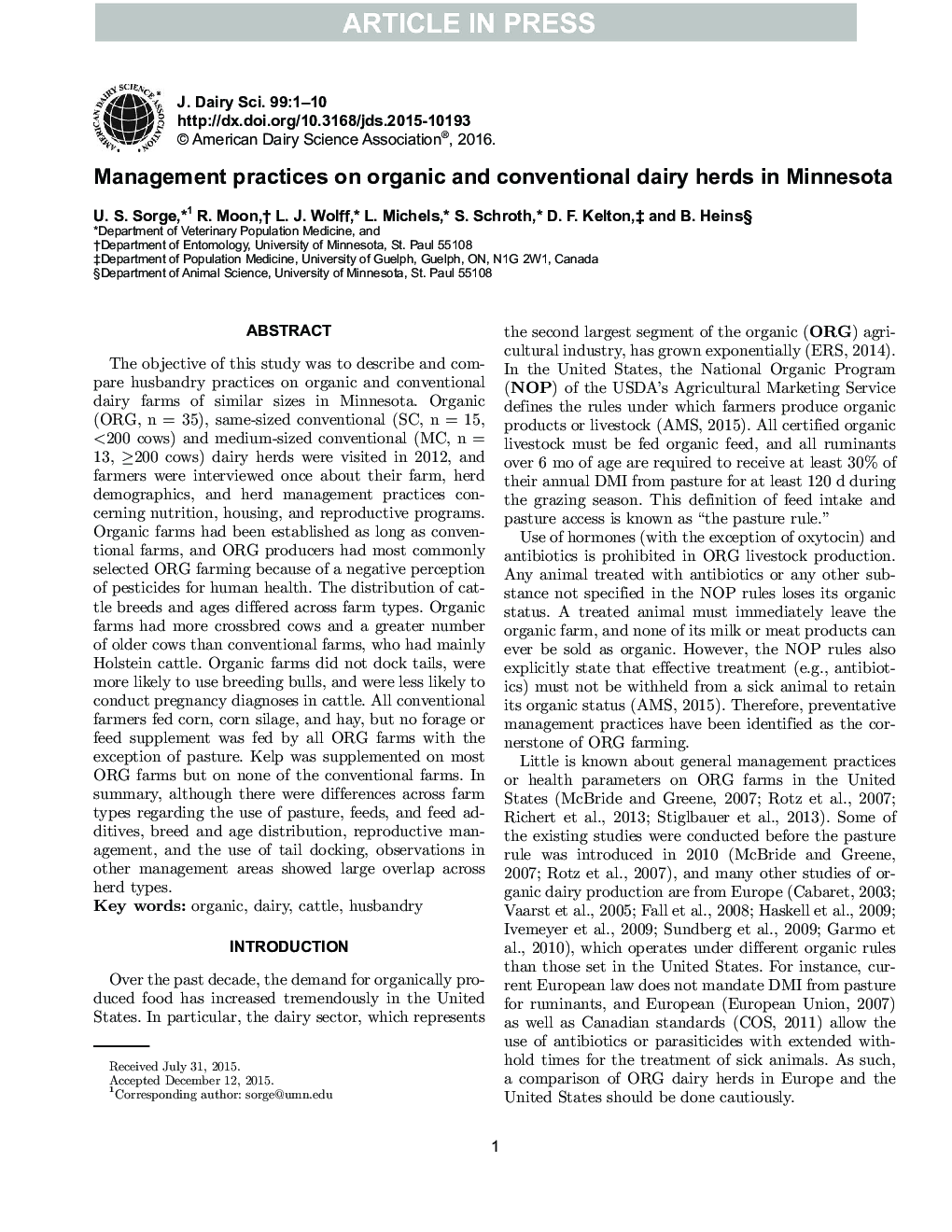| Article ID | Journal | Published Year | Pages | File Type |
|---|---|---|---|---|
| 10973154 | Journal of Dairy Science | 2016 | 10 Pages |
Abstract
The objective of this study was to describe and compare husbandry practices on organic and conventional dairy farms of similar sizes in Minnesota. Organic (ORG, n = 35), same-sized conventional (SC, n = 15, <200 cows) and medium-sized conventional (MC, n = 13, â¥200 cows) dairy herds were visited in 2012, and farmers were interviewed once about their farm, herd demographics, and herd management practices concerning nutrition, housing, and reproductive programs. Organic farms had been established as long as conventional farms, and ORG producers had most commonly selected ORG farming because of a negative perception of pesticides for human health. The distribution of cattle breeds and ages differed across farm types. Organic farms had more crossbred cows and a greater number of older cows than conventional farms, who had mainly Holstein cattle. Organic farms did not dock tails, were more likely to use breeding bulls, and were less likely to conduct pregnancy diagnoses in cattle. All conventional farmers fed corn, corn silage, and hay, but no forage or feed supplement was fed by all ORG farms with the exception of pasture. Kelp was supplemented on most ORG farms but on none of the conventional farms. In summary, although there were differences across farm types regarding the use of pasture, feeds, and feed additives, breed and age distribution, reproductive management, and the use of tail docking, observations in other management areas showed large overlap across herd types.
Related Topics
Life Sciences
Agricultural and Biological Sciences
Animal Science and Zoology
Authors
U.S. Sorge, R. Moon, L.J. Wolff, L. Michels, S. Schroth, D.F. Kelton, B. Heins,
